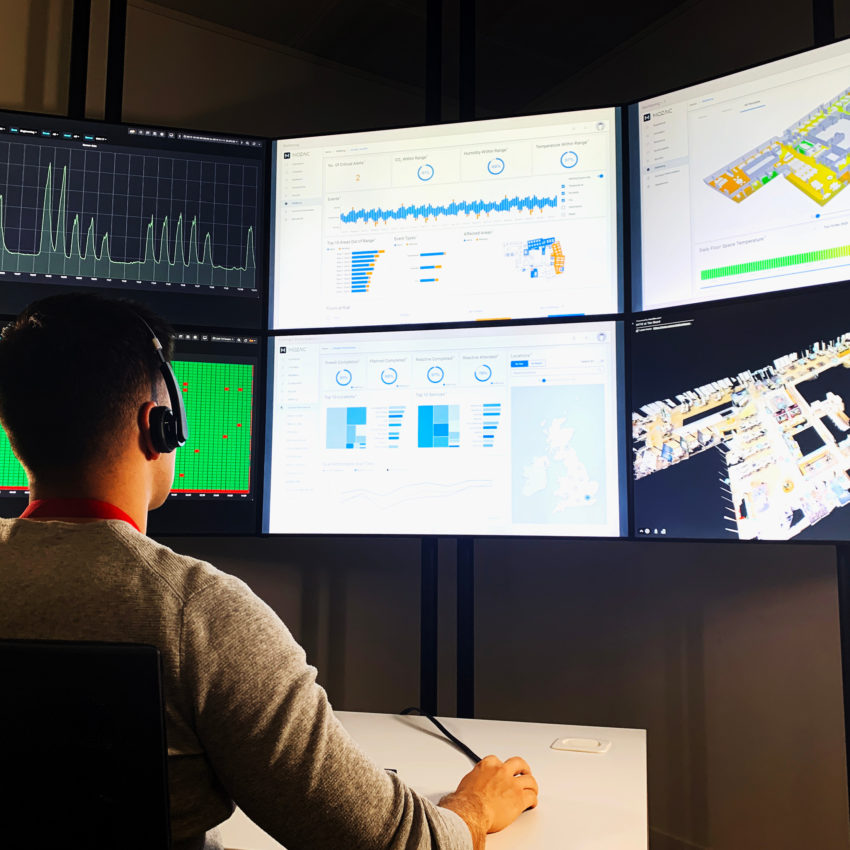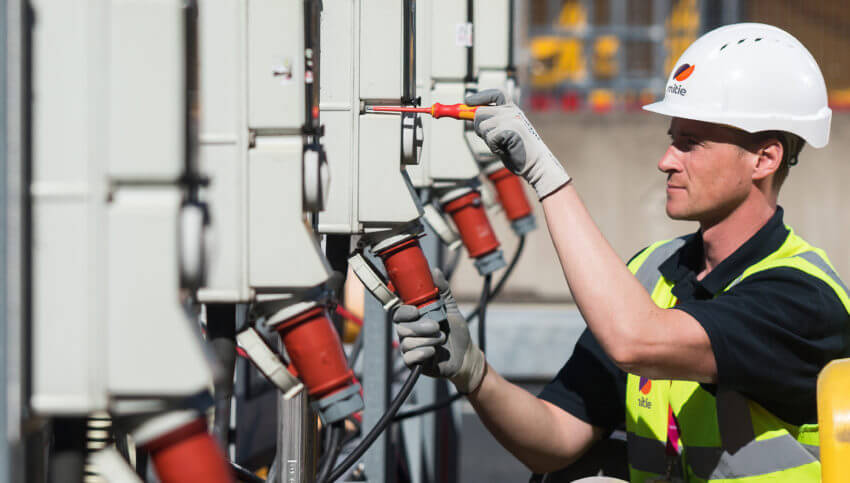How AI has reshaped engineering maintenance in FM
Artificial intelligence continues to radically change how industries operate around the world. Here, we look at the specific ways it is being harnessed in engineering maintenance.
For many of us, the term artificial intelligence (AI) still conjures up images from science fiction, but the truth is AI has been a reality for years. It transforms our experience of high-traffic websites like Google and Amazon, powers voice commands on mobile devices, and enables products like smart speakers and self-driving cars.
The capabilities of AI extend well beyond shiny consumer goods and into the realms of industry, engineering and facilities management.
But let’s start at the beginning. What do we mean by AI?

What is AI?
AI is the display of intelligence by artificial systems or devices, as opposed to what we normally associate with biological organisms. It covers a broad spectrum. At one level we have the apps on our mobile devices that perform single day-to-day tasks and help to keep us organised. On another level AI has the potential to transform how we manage the spaces that we live and work in. AI systems are sometimes also referred to as ‘intelligent agents’.
In the case of engineering maintenance, intelligence means autonomous action taken without any outside instruction, in response to specific inputs, or changing external conditions. An artificially intelligent system responds by processing the data and predicting the optimal next step. It will then take different actions to maximise progress towards a pre-programmed goal. In engineering maintenance, these outputs might be:
- Issuing an alert
- Changing trajectory
- Activating a mechanism
- Providing requested information
How is AI improving engineering maintenance in FM?
As most facilities managers know, traditional engineering maintenance is labour intensive, requiring a rolling schedule of manual checks to keep assets in good working order. Modern AI technology simplifies this process and, as a result, boosts business productivity. Automation, remote management, data analytics and machine learning, are at the heart of our Connected Workspace services.
Connectivity and remote monitoring
The process begins with remote monitoring of equipment and facilities. Embedded sensors continuously transmit data back to remote monitoring stations, which might include:
- Operational load
- Total usage hours
- Component performance
Data collection, processing and analysis
At Mitie, our Service Operations Centre remotely monitors clients’ sites, 24/7, and processes the incoming data in real time. Data is continuously analysed and compared to standard operating parameters, to detect developing faults or problems and trigger a response, before they cause costly equipment downtime. This is called predictive maintenance.

Eliminating disruption and downtime
How does AI increase productivity? Remote access to assets allows our Service Operations Centre to triage issues before the engineer goes on site. When developing faults are detected, AI maintenance software will automatically alert the maintenance engineering team and make sure they have all the information they need before arriving. This increases first-time fixes and reduces time on site. Replacements and repairs are conducted before any equipment failure: a true example of the power of machine-human collaboration.
Other ways AI adds value to business maintenance
AI-enabled systems bring an impressive level of efficiency to maintenance operations, which also can help to minimise carbon emissions and protect the environment. Components are replaced and equipment repaired precisely when needed, dramatically reducing equipment breakdown and replacement, and cutting the facility’s energy consumption.
AI-enhanced engineering maintenance typically delivers cost savings as a result of:
- A reduction in manual maintenance checks and fewer on-site engineer visits
- Fewer parts and components needing replacements because the equipment remains in peak working order for longer
- Reduced equipment downtime

What is next for AI in engineering maintenance?
AI is becoming increasingly powerful and can deal with mind-boggling amounts of data. At the same time, it is getting cheaper and more accessible. As AI-enhanced predictive maintenance equipment becomes more mainstream, it will benefit from economies of scale and become more accessible to even the smallest businesses.
More businesses will use AI-enhanced maintenance as they become more dependent on complex technology that is incompatible with traditional manual maintenance.
How can Mitie’s engineering maintenance team help your business?
As one of the UK’s largest facilities management specialists, Mitie has developed industry leading expertise in predictive maintenance. Using the latest technology, we provide customers with FM services that are more precise, measurable and predictable. We call this approach the Science of Service®.
From our Service Operations Centre we remotely gather, analyse and monitor, real-time data from hundreds of customer sites around the country, 24/7. We monitor 53,000 assets, and a further 17,000 nominated critical assets, and we process 8 million data points from 525 sites.
We provide both remote and on-site maintenance services. Our helpdesk, in our Technical Services Operations Centre, is always a call away, ready to respond to reported problems and provide technical assistance. Our customers benefit from maximum uptime and minimum energy consumption, alongside major reductions in running costs.
Enquire now to see how Mitie can support your company’s maintenance requirements.
Read next
Can big data fast-track maintenance solutions?
Leveraging big data can significantly enhance facilities maintenance and engineering, reducing both time and workforce demands. How does it work? Buildings can produce a continuous stream of data from the components or equipment under…
5 Questions to ask before starting your IoT/AI project
As the UK’s largest facilities management company, Mitie knows a thing or two about buildings and building infrastructure. We know the often significant, sometimes profound, difference an improvement to maintenance regimes, energy consumption, space…
Better Connected: Embracing data to optimise Real Estate assets
In the second of our Better Connected series of articles, which each take a look at the impact of digital transformation on different aspects of facilities management, we turn this time to workplace occupancy…
 Skip to content
Skip to content
